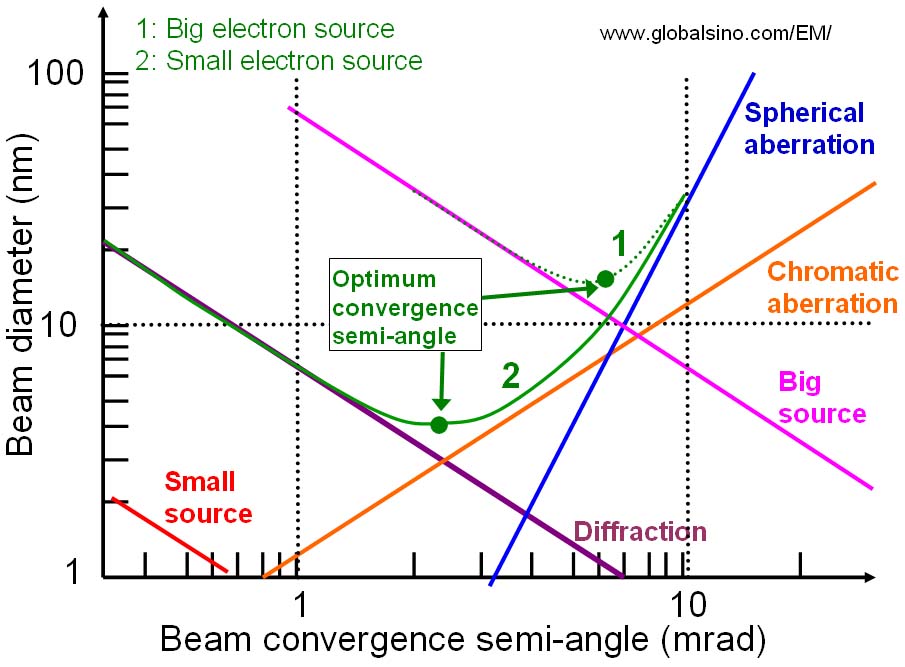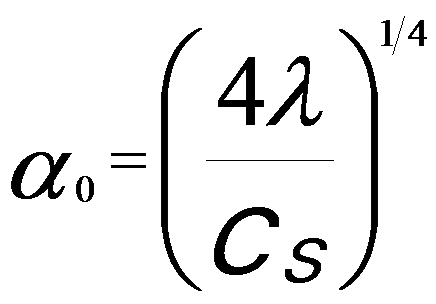=================================================================================
Because of the dependence of beam size on diffraction and aberrations as shown in Figure 2750, in order to achieve the optimum performance the diffraction and aberrations should be balanced as indicated by the optimum convergence semi-angles. For big electron sources, at low convergence semi-angles (α), the diffraction mainly determines the beam size, while at high α the spherical aberration is the dominant factor.
The diffraction term is given by,
dd=0.61λ/α ----------------- [2750a]
The spherical aberration term is given by,
ds=1/2Csα3 -------------------------- [2750b]
where,
λ -- The wavelength of the incident electron beam,
Cs -- The spherical aberration coefficient,
α -- The convergence semi-angle.

Figure 2750. Diameter of the electron-beam as a function of beam-convergence semi-angle. 1: big electron source. 2: small electron source.
The FWHM (full-width half maximum) of the minimum attainable probe size (d0) and the optimum convergence semi-angle (α0) can be given by [1],
 ------------------------------------- [2750c] ------------------------------------- [2750c]
 ------------------------------------- [2750d] ------------------------------------- [2750d]
[1] O. Scherzer, "The Theoretical Resolution Limit
of the Electron Microscope". Journal Of
Applied Physics. 20 20-29 (1949). |

 ------------------------------------- [2750d]
------------------------------------- [2750d]